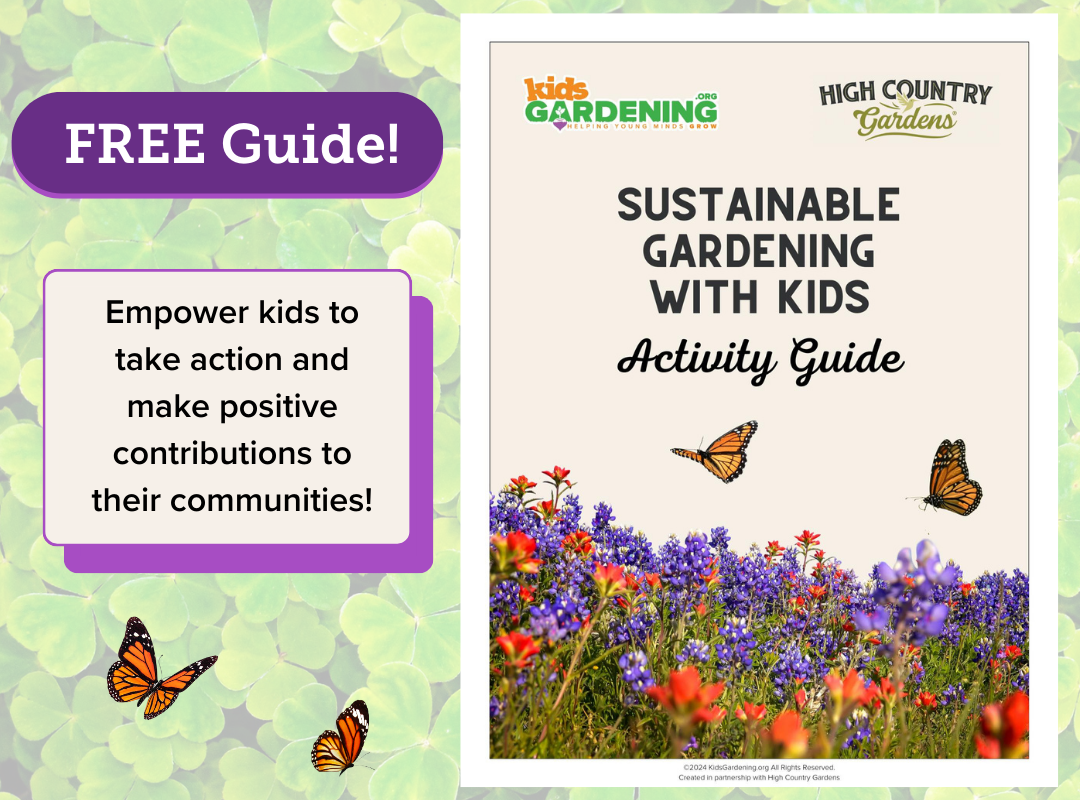Some are apprehensive about new situations, such as a garden setting. Others fear stinging insects, suffer from allergies, or simply dislike getting dirty or sweaty.
The first steps are determining why a child is hesitant about gardening and whether you can do something to address the situation. For example, if a child doesn’t want to get dirty, provide gloves and make sure the parents know ahead of time when you plan to garden so they can dress the child appropriately. With clothing geared for outdoor fun, gardening activities may be less stressful for the child. Although you can’t control the temperature or the presence of insects, you can overcome these and other potentially off-putting aspects of gardening if children are excited about the activity. Here are 10 ideas for nurturing enthusiastic gardeners:
Instill Ownership
The sense of responsibility and pride that comes with the investment of ownership leads to dedicated, enthusiastic youth gardeners. To achieve maximum buy-in, involve the kids in all steps of the garden: planning, installation, and maintenance. For more tips on how to instill a strong sense of ownership for your garden program, check out Cultivating Ownership.
Provide an Orientation
Most children are more comfortable when they understand expectations and boundaries. Before starting a garden project, do an orientation and explain any rules and procedures clearly. Give a tour of the space, pointing out special features and the location of tools. This helps build confidence and puts children on the track to success.
Choose Engaging Plants
From plants that respond to touch (Mimosa) to plants with animal names (Lamb's ear), there is a plethora of plants with interesting and surprising features for you to install in your garden.
Recruit Additional Volunteers
Garden activities are best conducted in small groups, where the leader can interact with each child and focus on guiding inquiry rather than delivering instruction. Recruit plenty of volunteers so children can benefit from individual attention. Ultimately, this provides a more meaningful experience.
Link to Loves
Gardens offer a lot of opportunity for creativity in theme, design, and activities. Uncover some of your gardeners' favorite things, such as storybook or television characters, and incorporate them into your garden program. Check out these theme garden ideas: https://kidsgardening.org/garden-activities-theme-gardens/
Plan for Tasty Treats
What could be more fun than enjoying the fruits of your labor? Even if your focus isn’t on food gardening, grow a few edible crops, such as cherry tomatoes or sugar snap peas, and make sure each child has an opportunity to sample the harvest. Connecting the garden to the experience of eating helps reluctant gardeners find relevance to their everyday lives.
Attract Animals
Designing a garden to attract birds and butterflies adds another level of excitement. These creatures add a dynamic element because they change and move much faster than plants grow. Check out the following articles for information on attracting flying friends to your garden: Plant a Butterfly Garden and Planting for Pollinators .
Decorate with Whimsical Props
Spark your young gardeners' imaginations with fun garden ornaments and hardscape focal points, such as topiaries, fountains, mazes, benches, sundials, gnomes, arches, and gates. Build a sunflower house or a pirate’s garden.
Reserve Time for Play
All work and no play can turn kids off gardening. Instead, transform learning experiences into games and plan a few contests, such as who can grow the largest pumpkin or tallest sunflower. In the midst of all this fun, students won’t even realize they’re learning valuable lessons and skills.
Make Something to Take Home or Sell
Creating a garden product to share or sell boosts confidence and is a tremendous incentive to participate in the gardening program. Consider making flower bouquets, potpourri, sachets, pressed flower cards, or seed packets.
Most importantly remember that each child is unique. Allowing your young gardeners to approach the garden on their own terms is always the best approach. Just like plants, some will grow quickly with great enthusiasm and others may take their time, but with patience and care, they will flourish in the garden.



